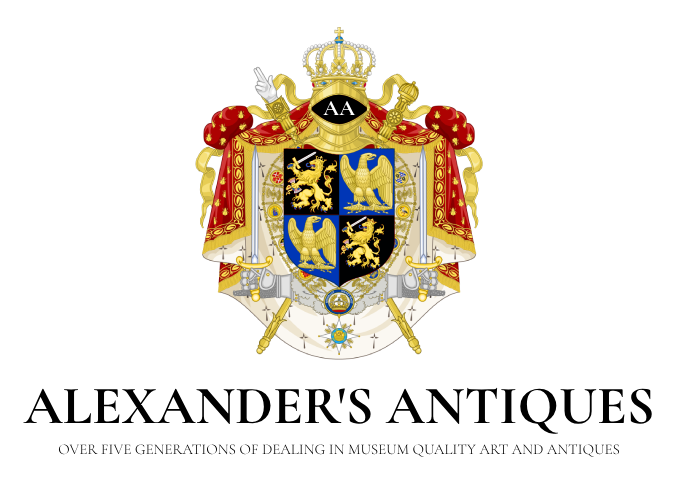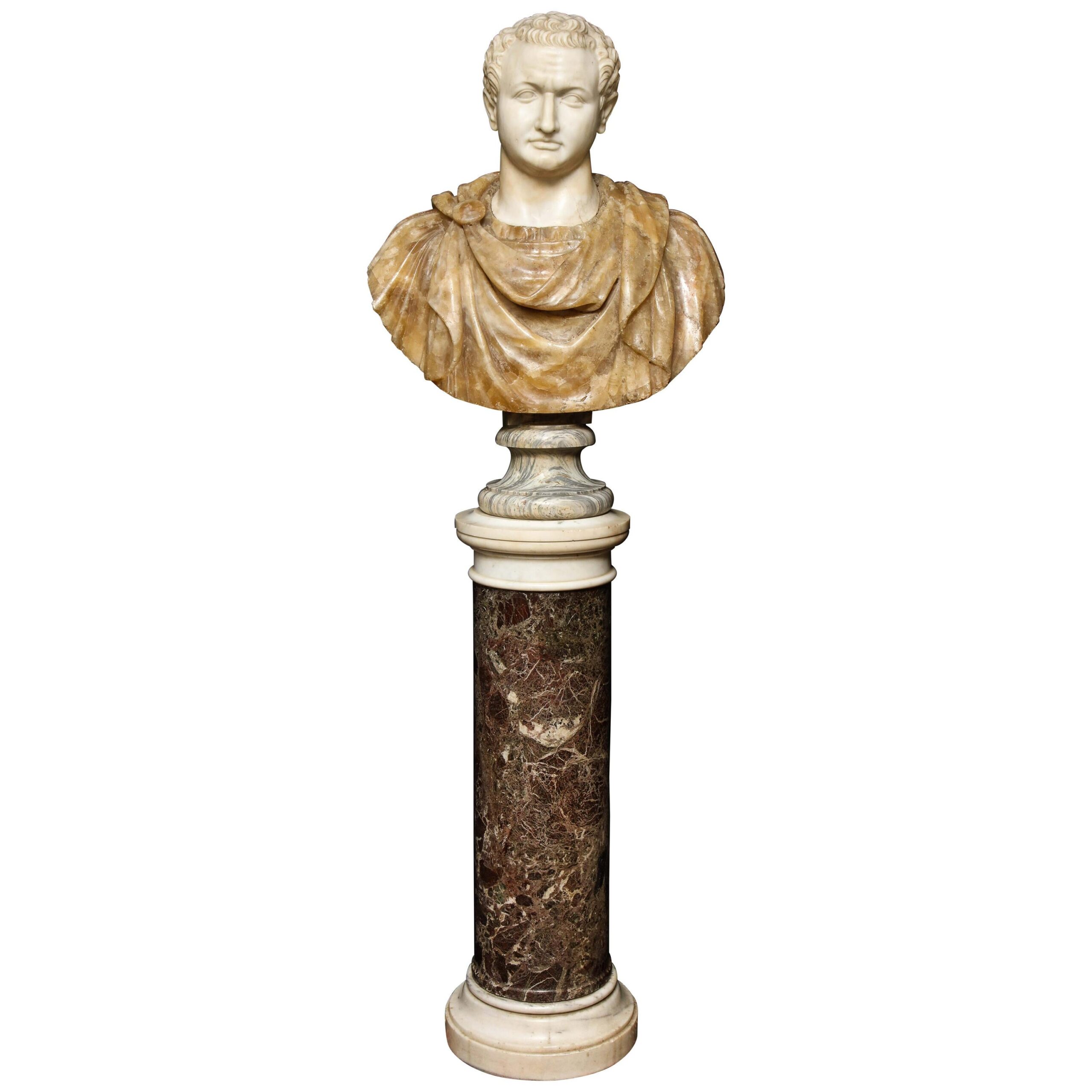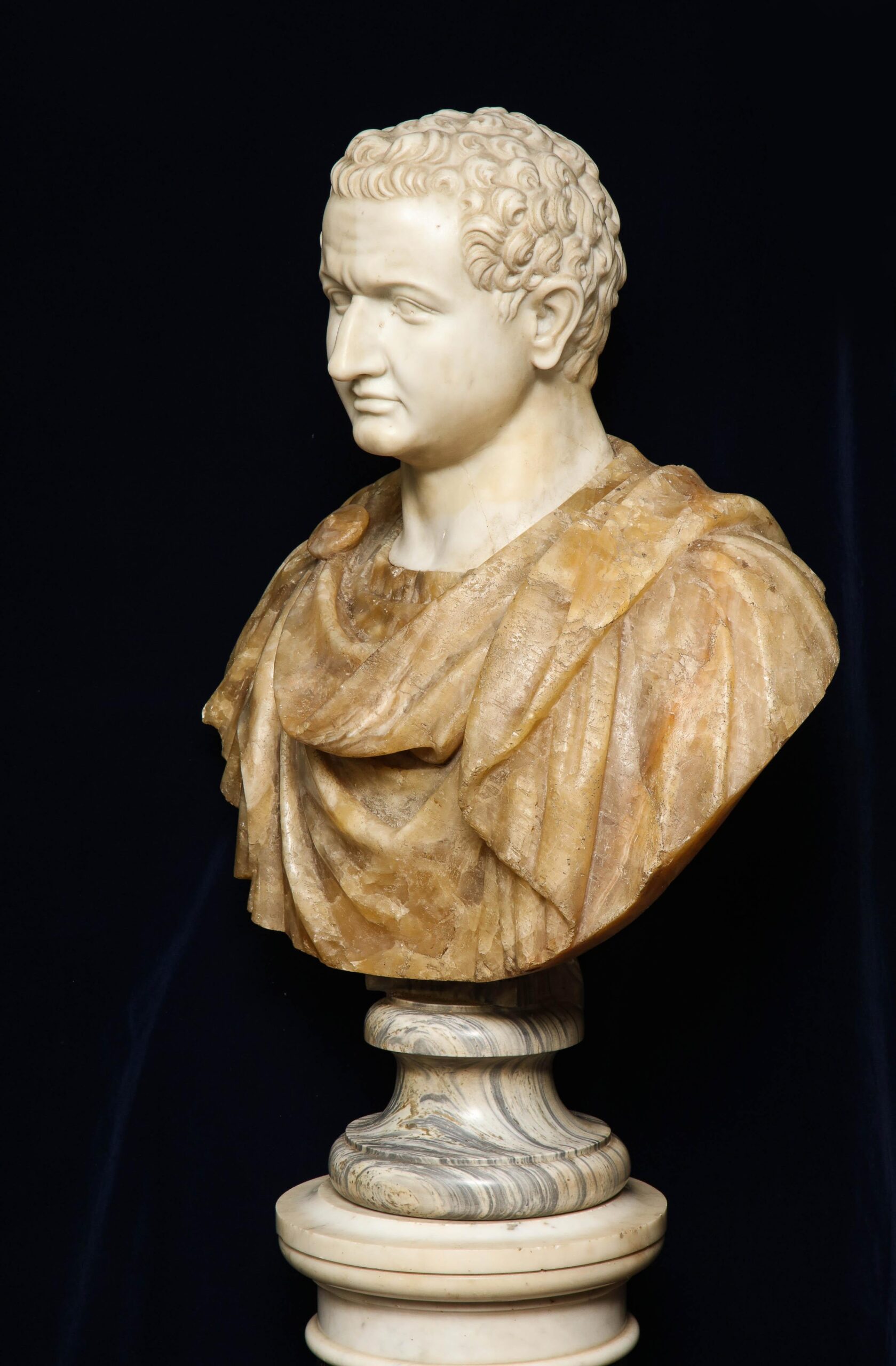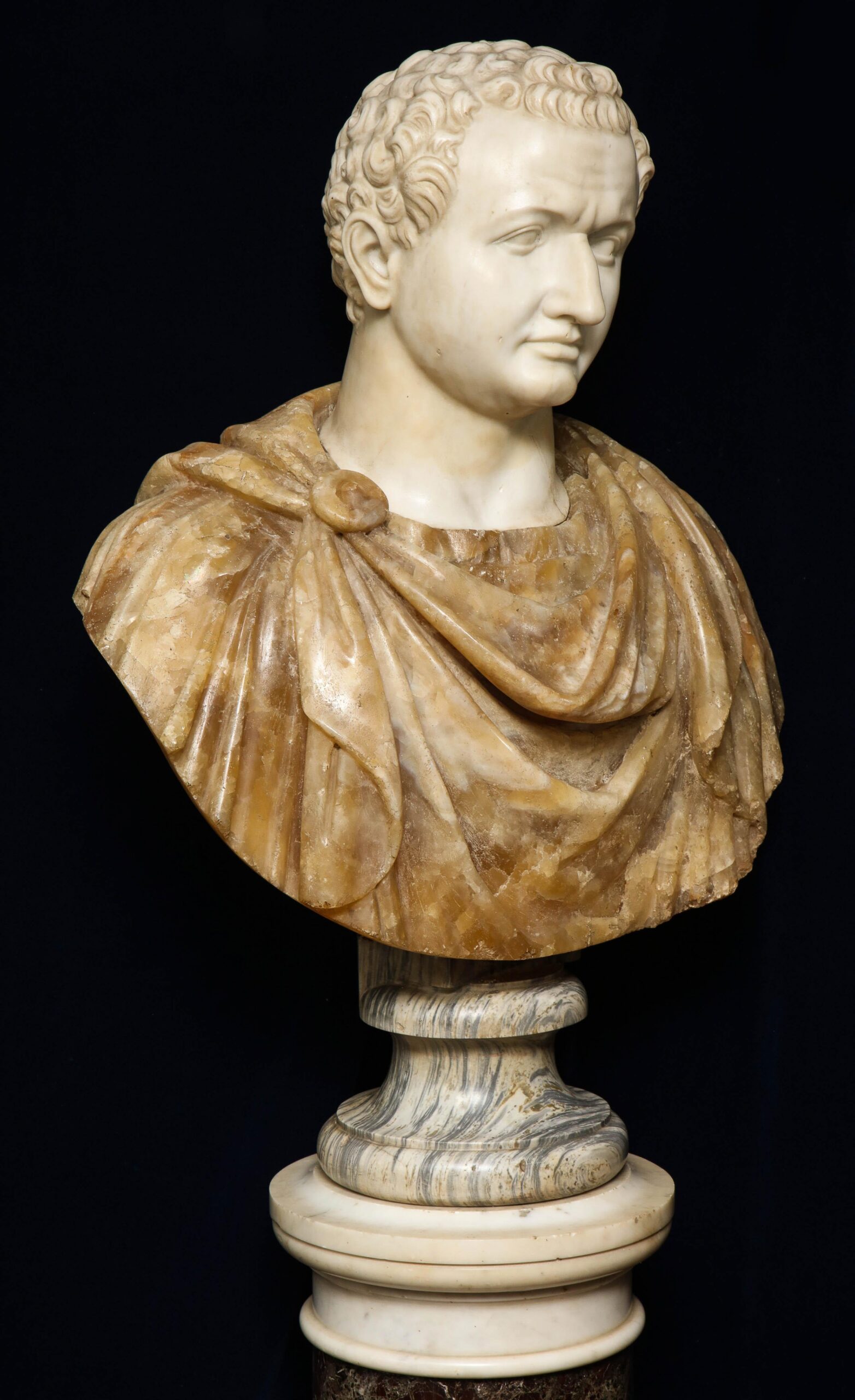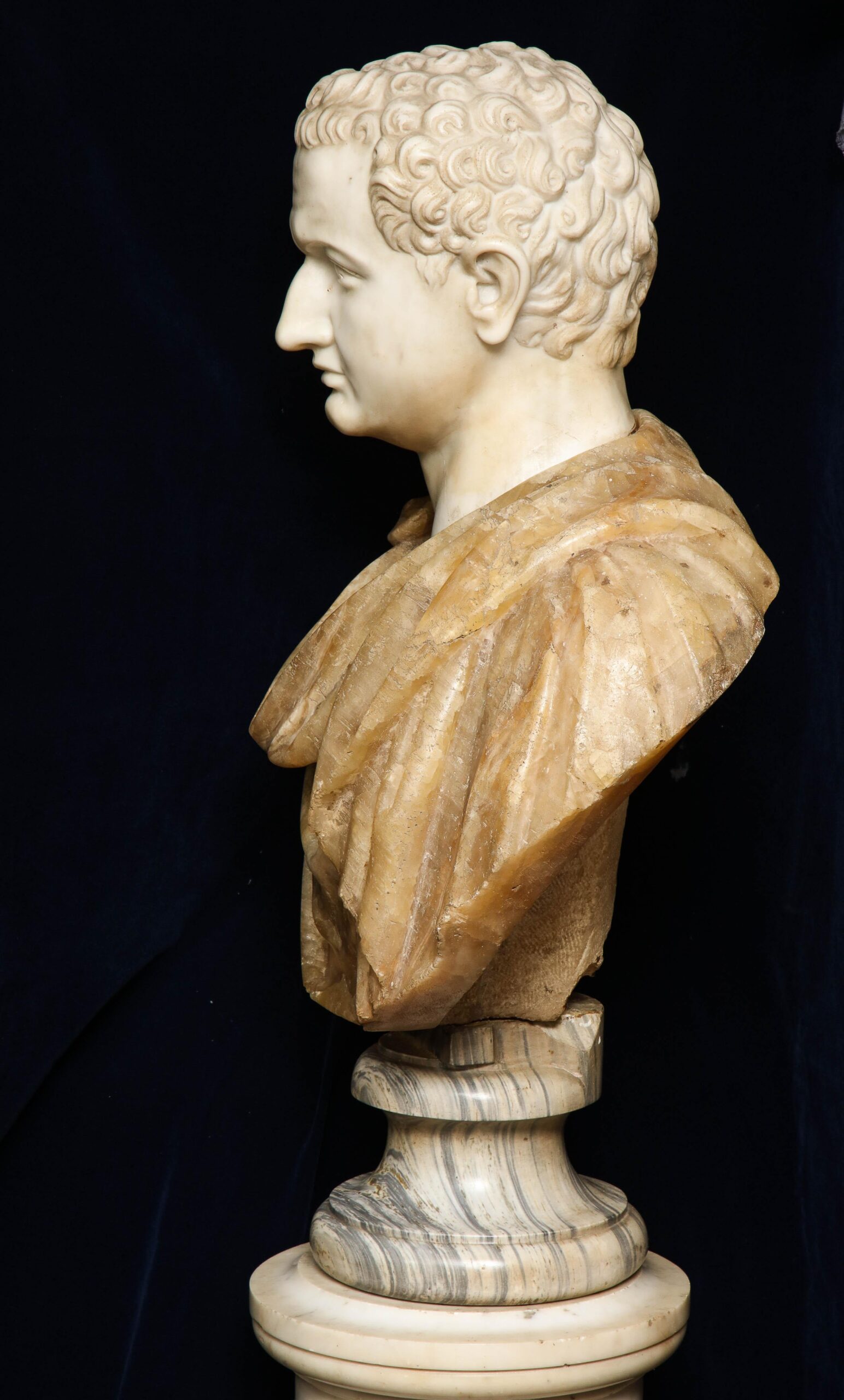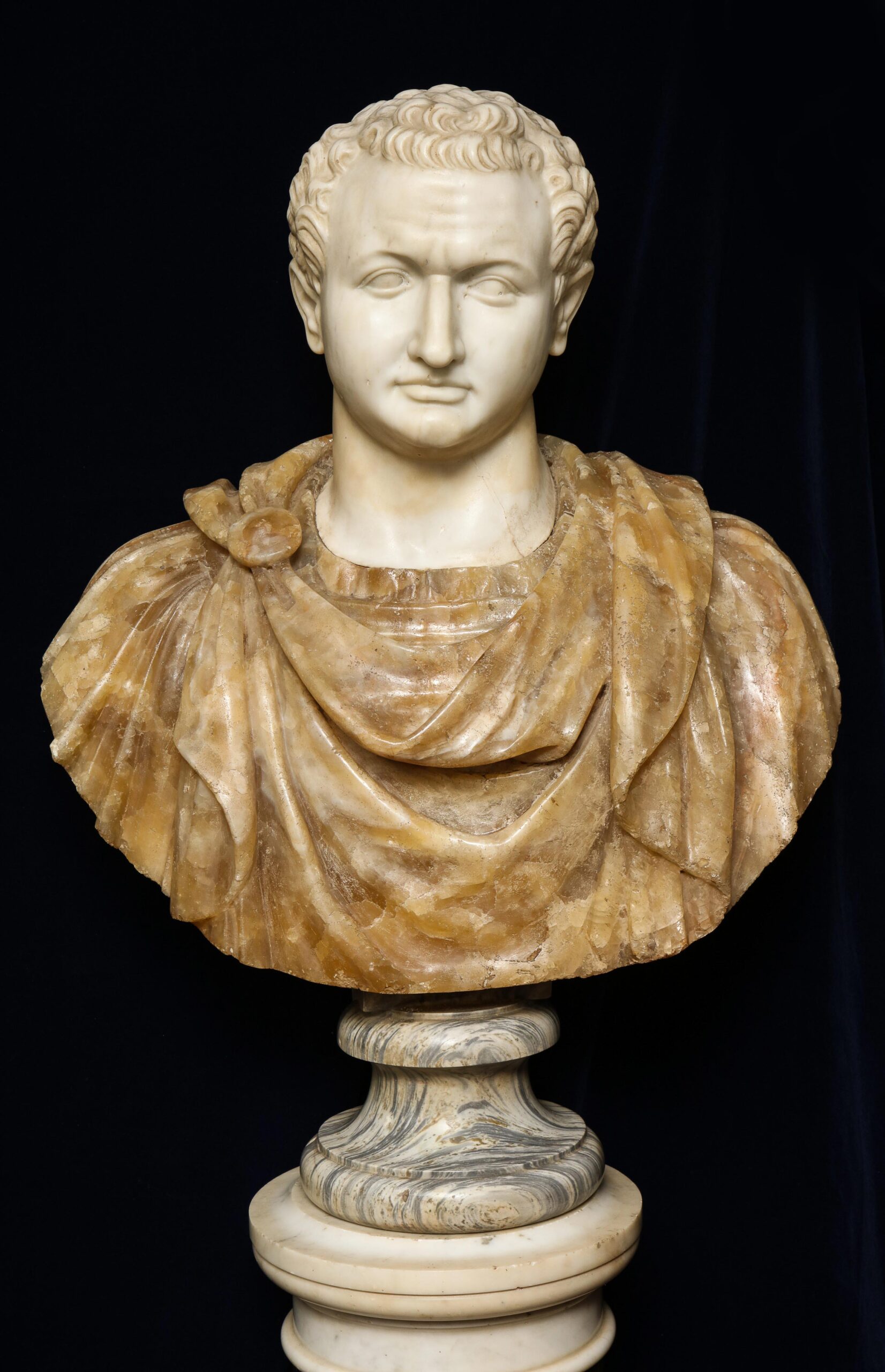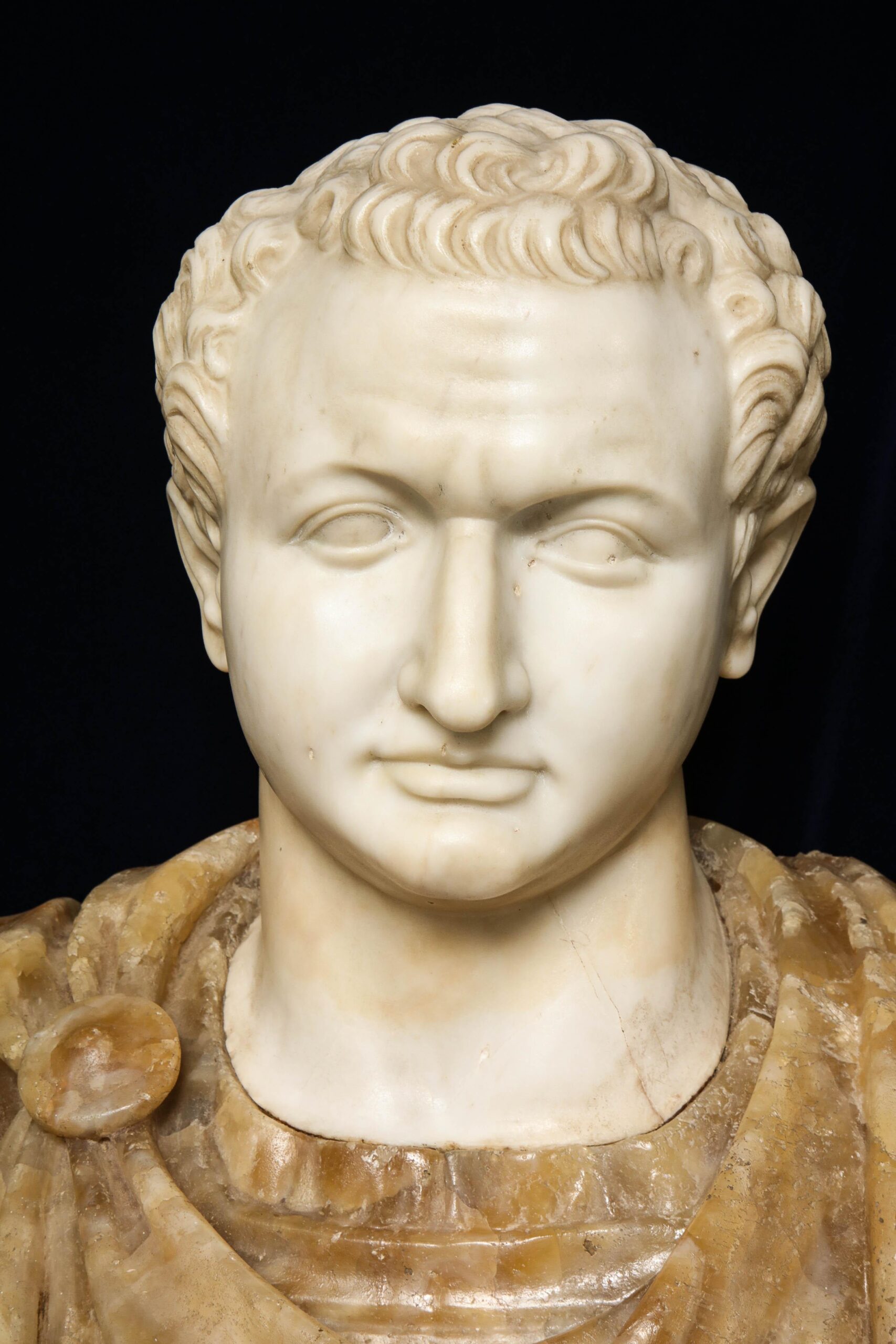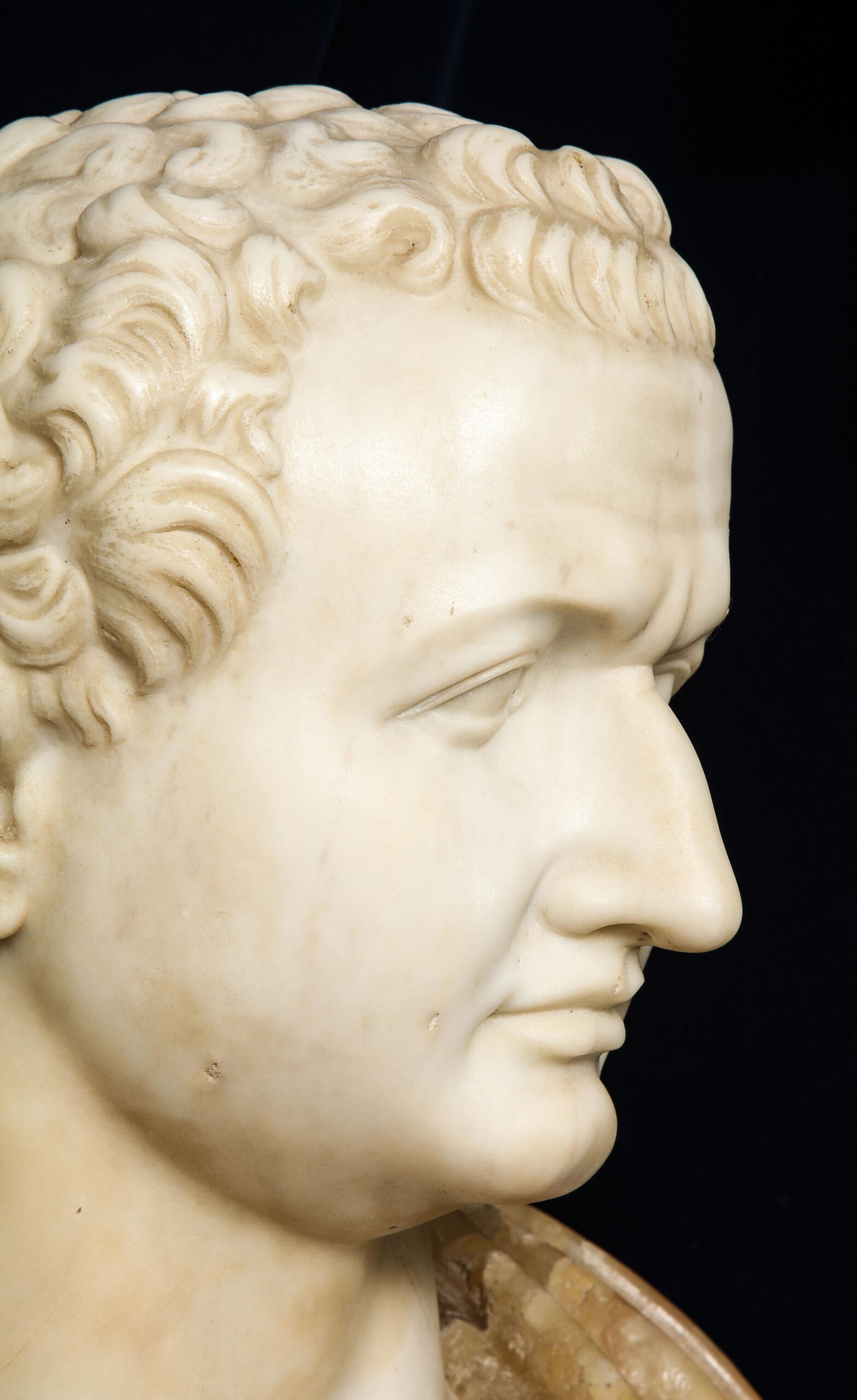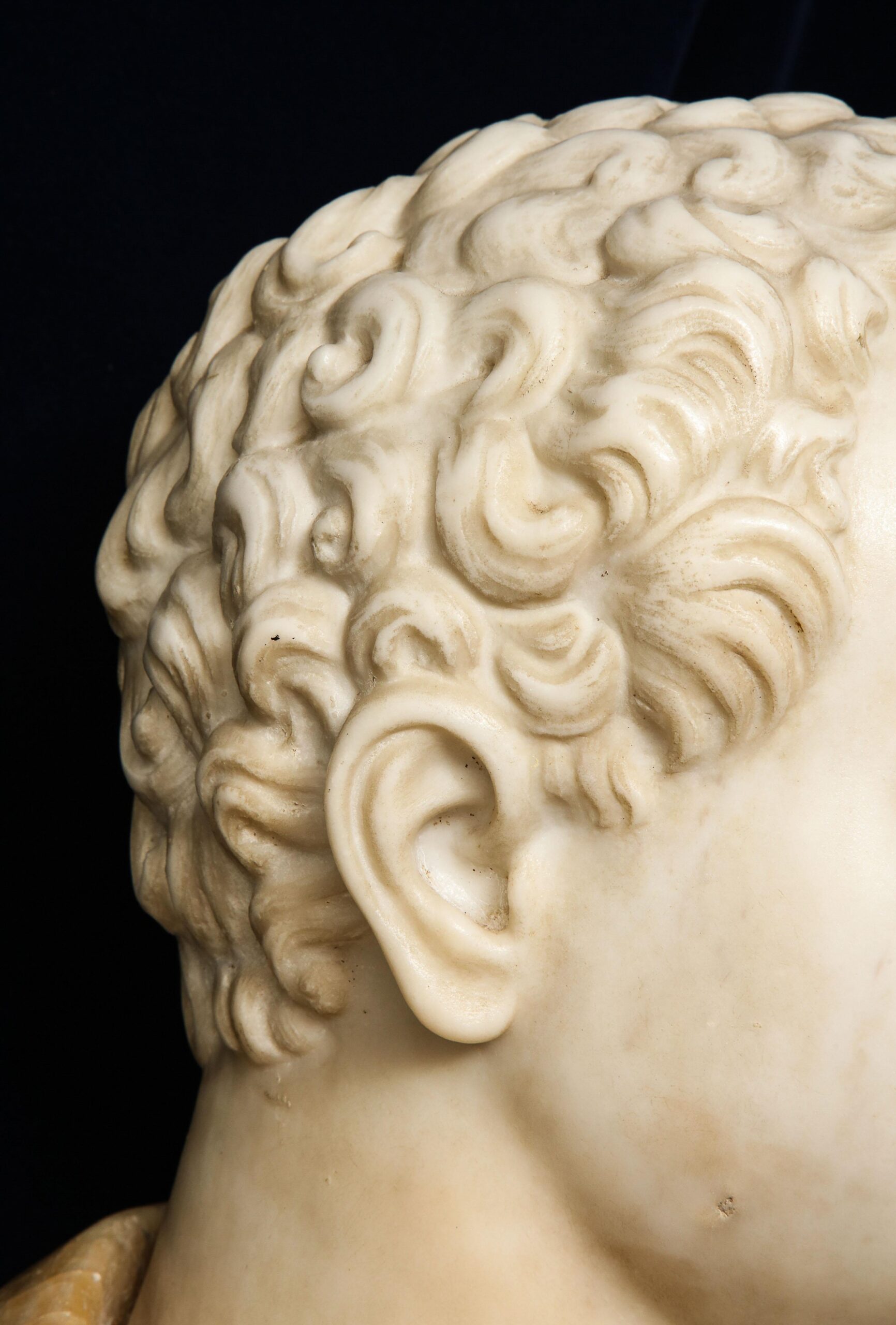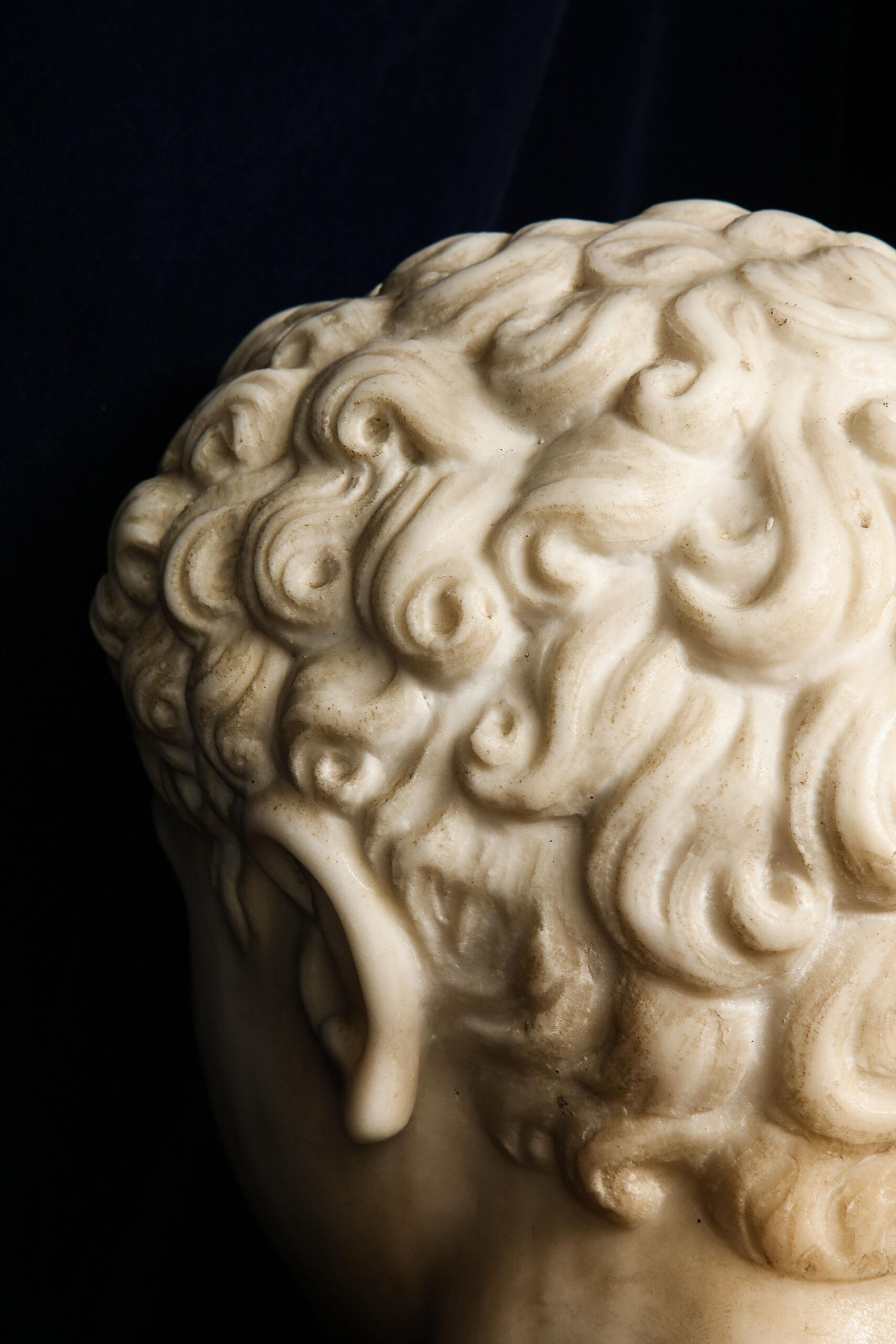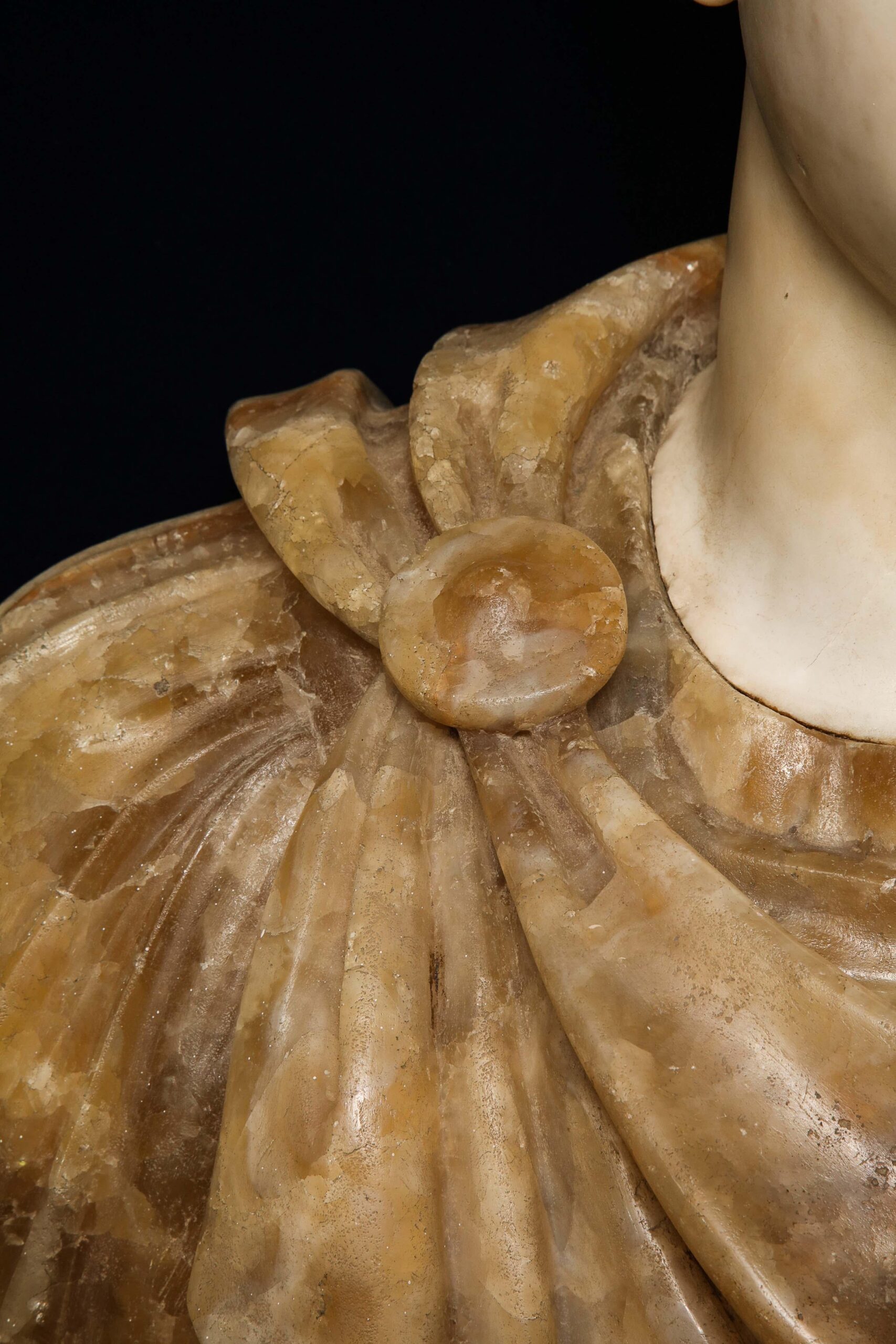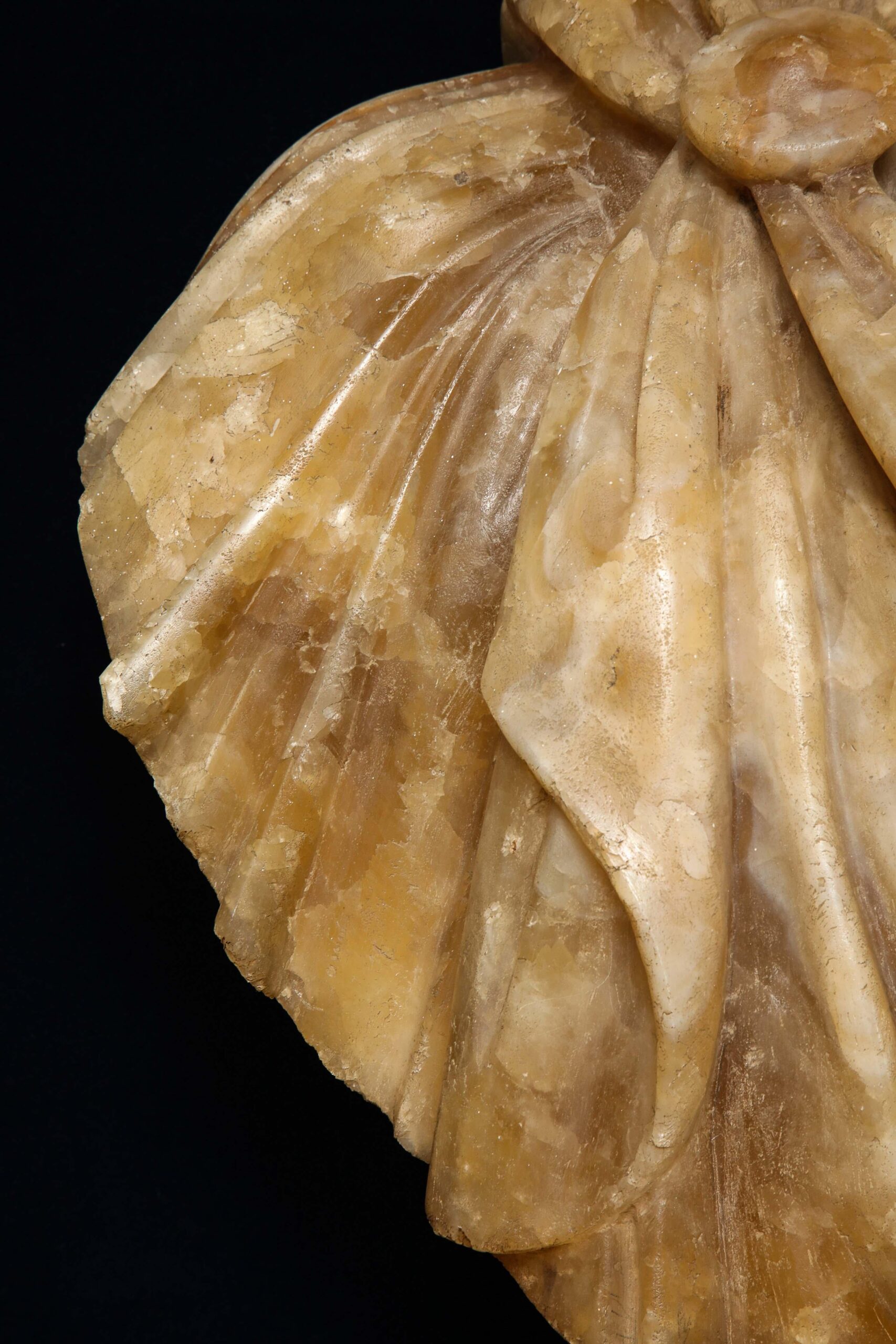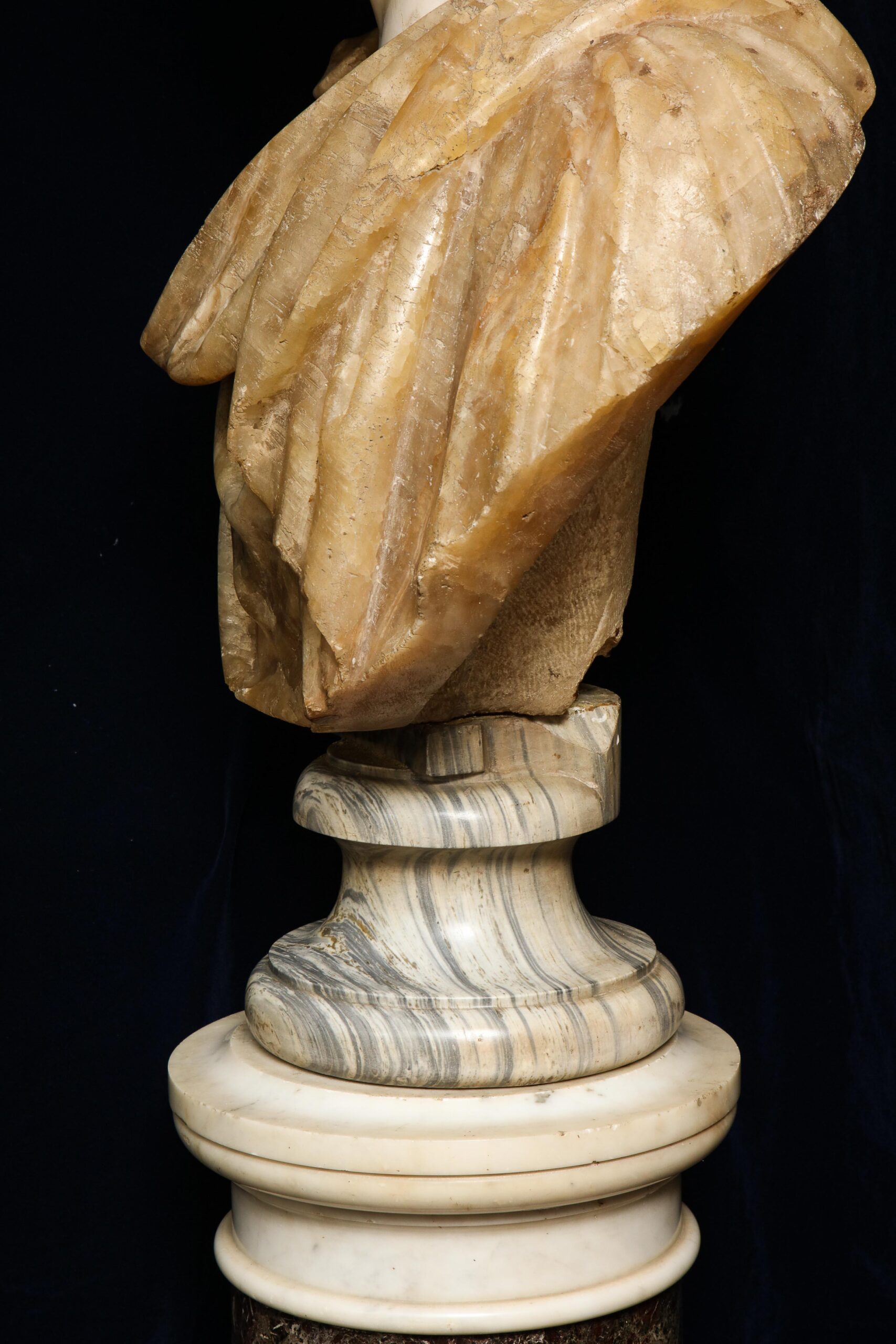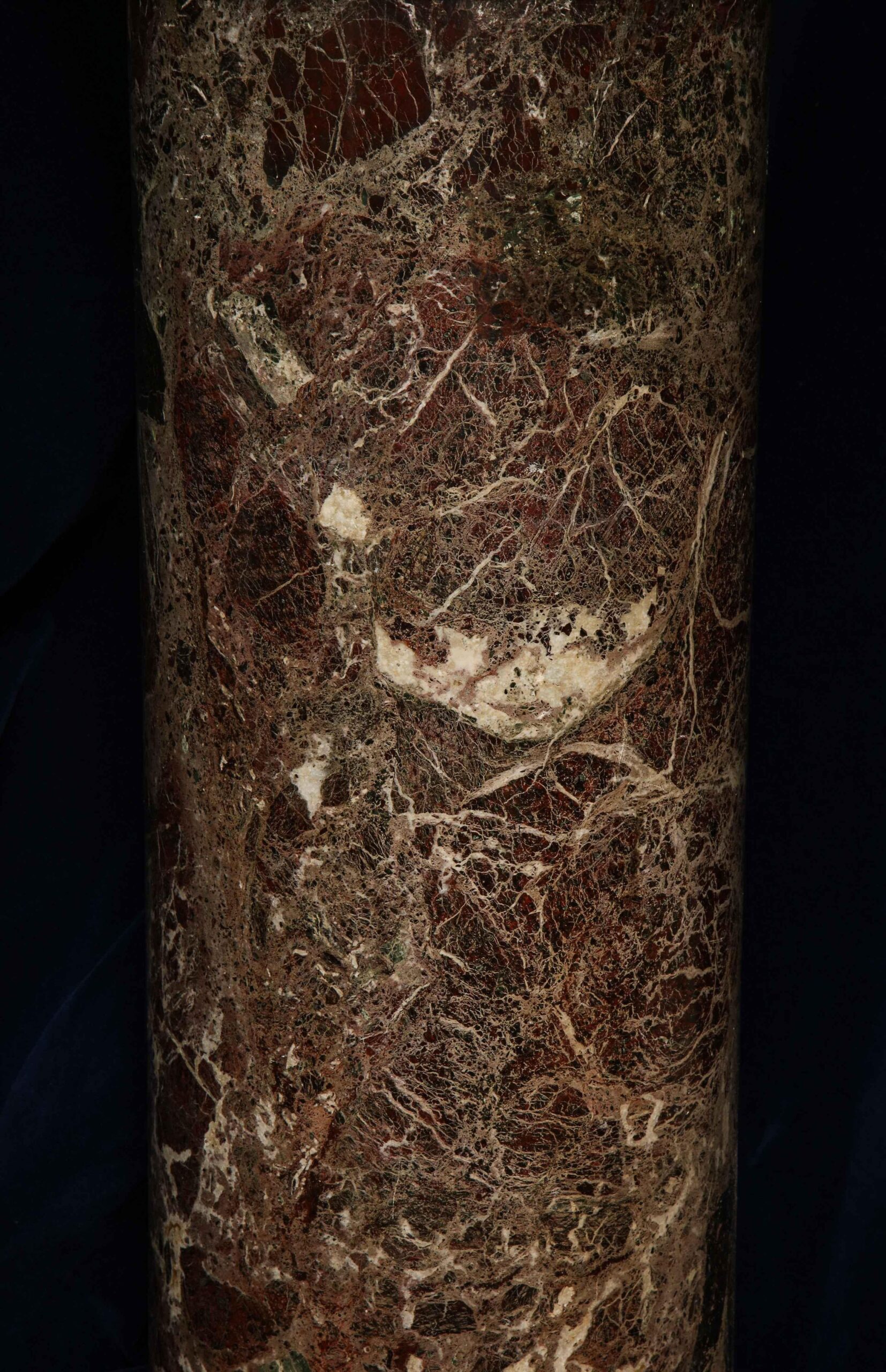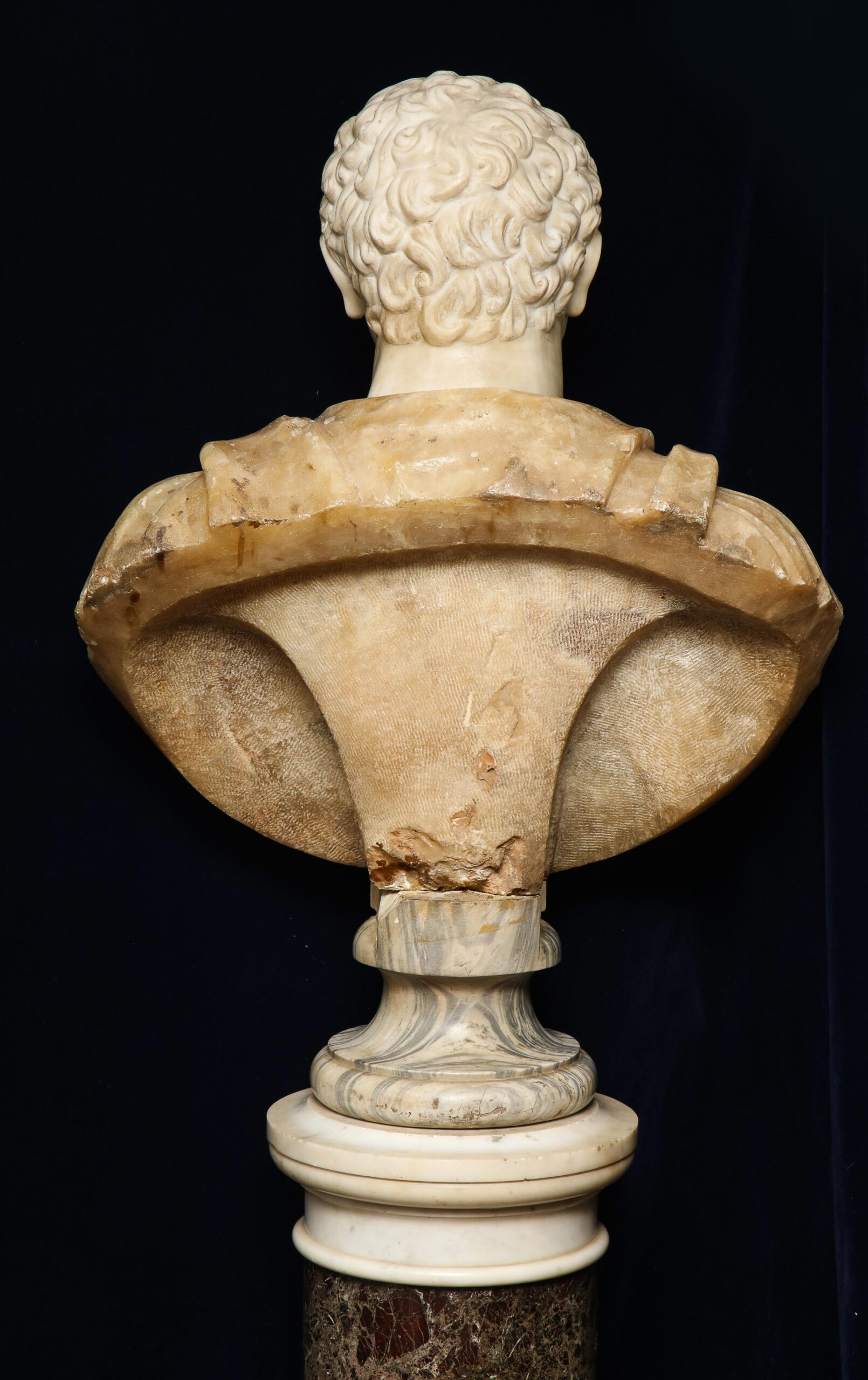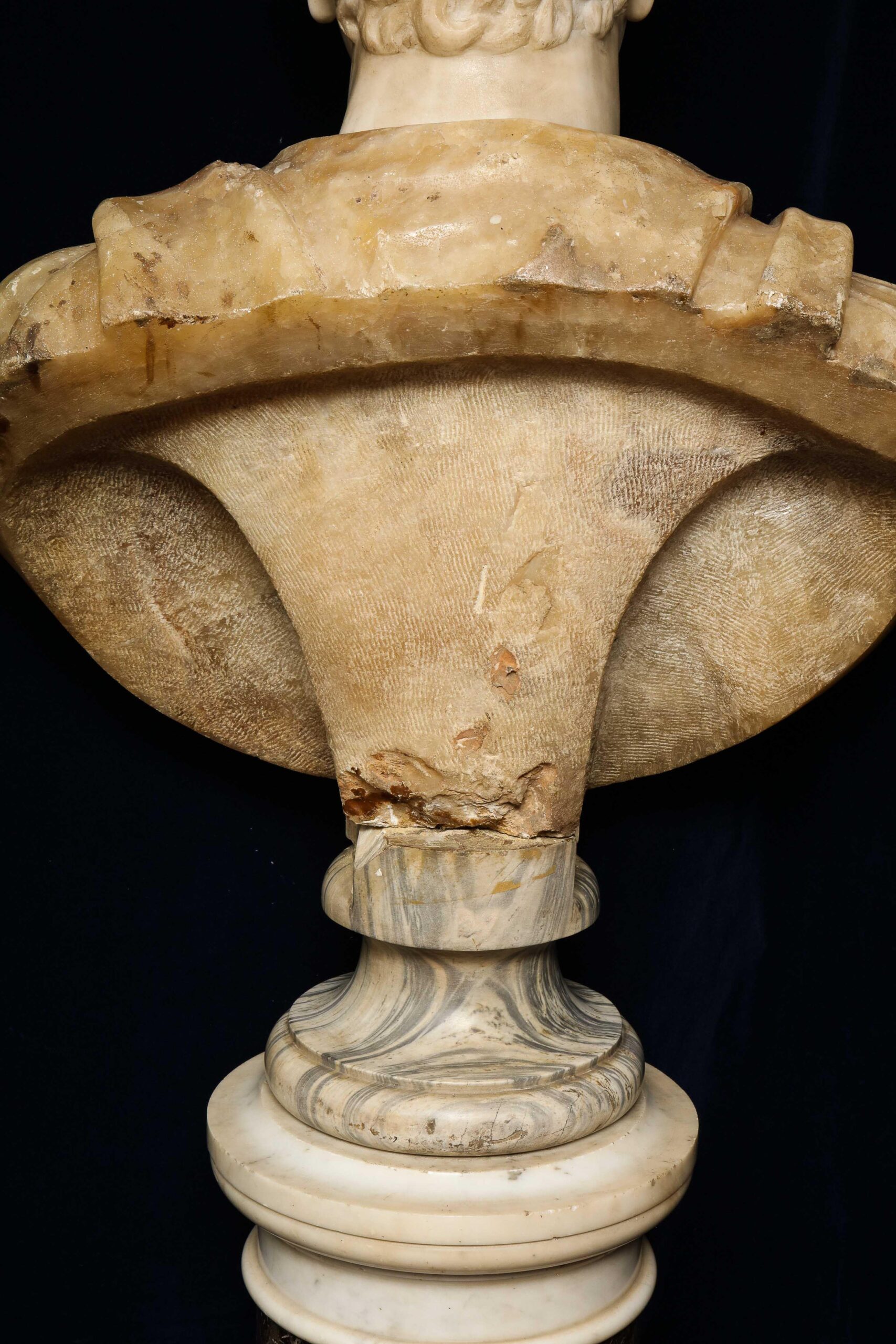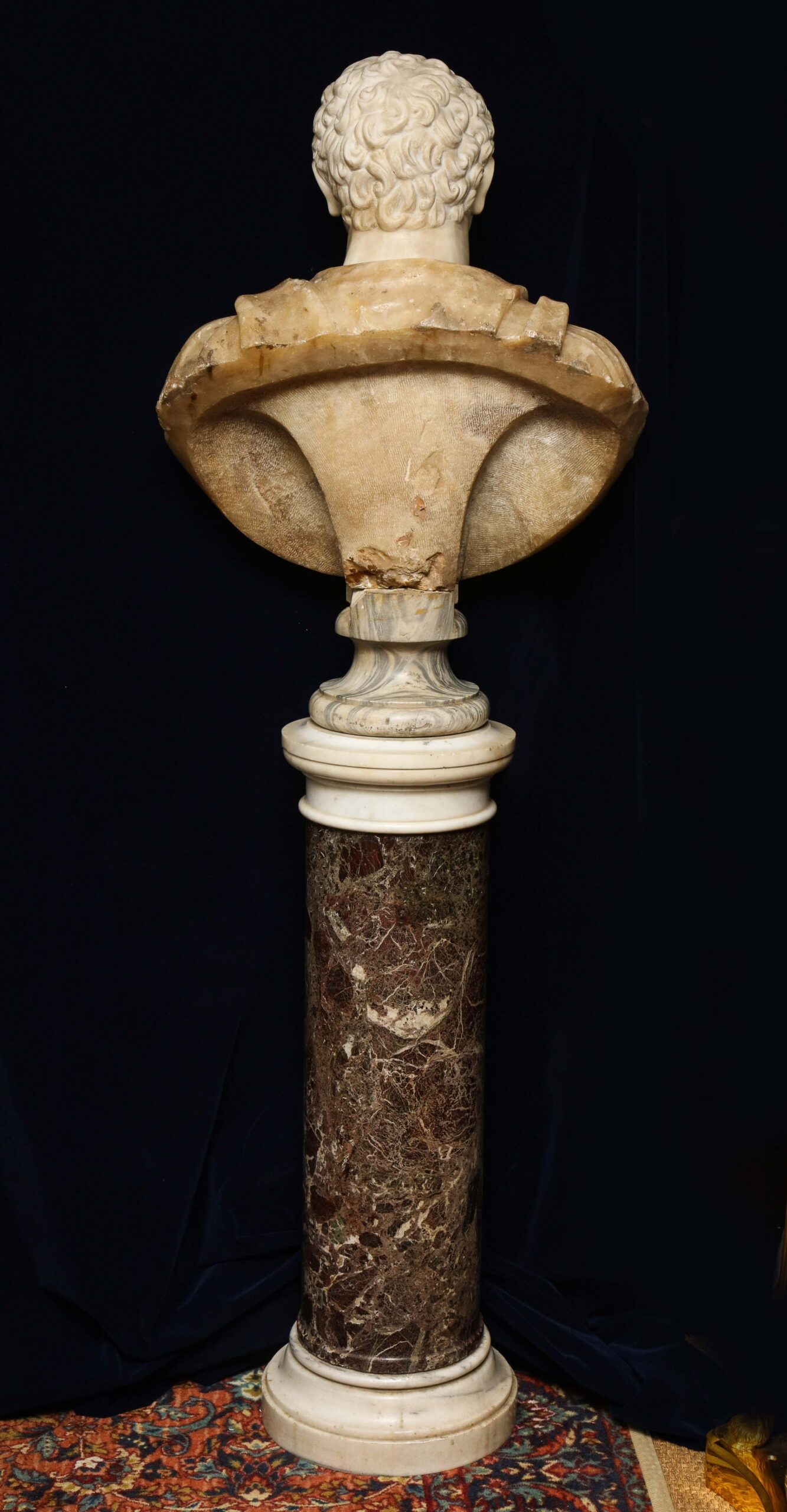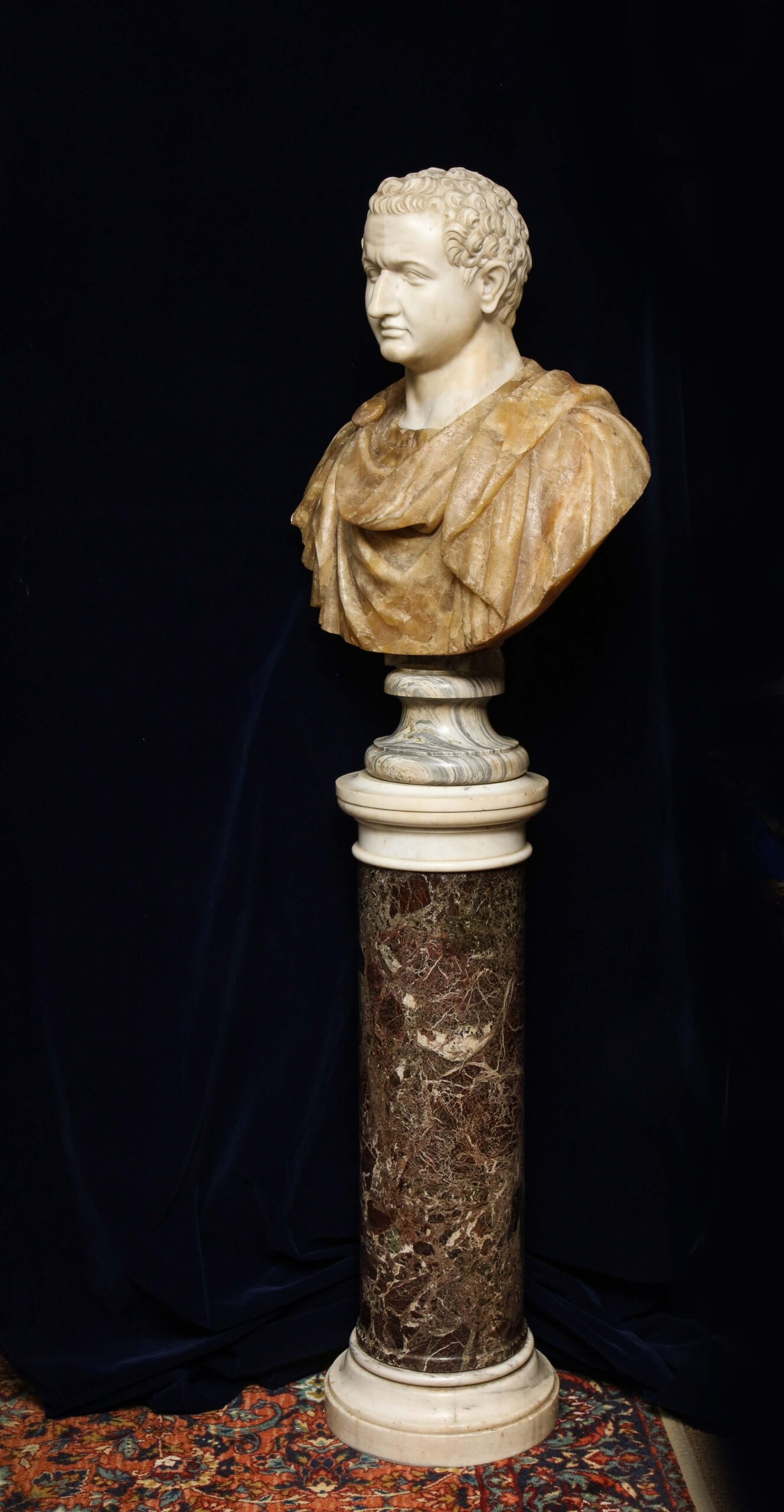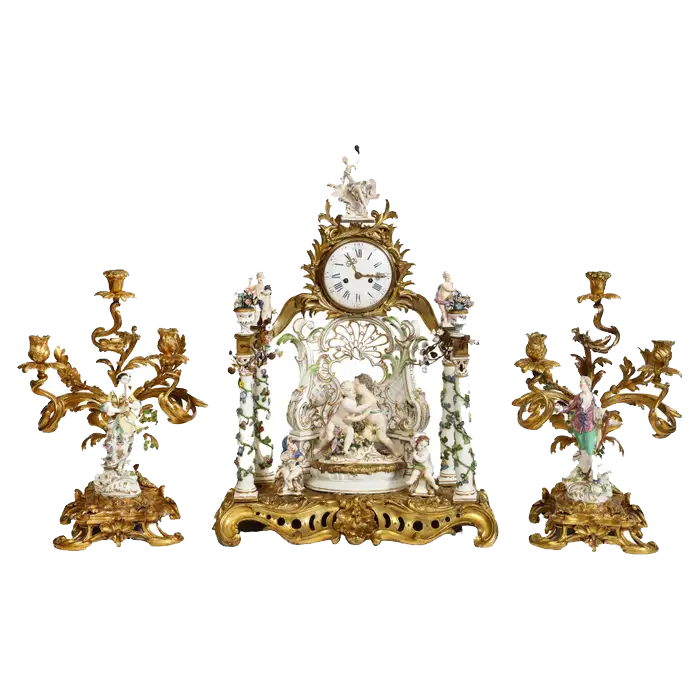18th-19th Century Neoclassical Multi-Marble Bust of Roman Emperor Titus Domitian
$98,850.00
+ Free ShippingAvailability: 1 in stock
Product Description
A striking late 18th-early 19th century bust of the Roman Emperor Titus Domitian. The head is made from hand carved white Carrara marble, the tunic and toga are made from hand carved honey alabaster, which are all supported on a cipollino marble socle. The bust rests on a robust column of red Breccia Pernice marble, mounted on a Carrara marble base and top.
The detail to this bust is truly exceptional. The quality of a marble bust is noted from a few factors; the first being the hair of the bust. Hair is an extremely delicate and free-flowing body part, which makes it very difficult to hand-carve with a realistic feel. The next factor in marble bust quality is demonstrated in the face. Humans have distinct characteristics that sets them apart from one another. An exceptional bust allows someone to just glance upon it and recognize the person immediately. The final factor in marble bust quality is the clothes. Like hair, fabrics are free-flowing in nature, with variable curves and inconsistencies. A true master marble sculptor will exceptionally carve the general attire of the bust, in this case a tunic and toga, to resemble that of a free-flowing garment in the breeze, with curves and silhouettes. This bust of the Roman Emperor Titus Domitian reflects all these key characteristics and more. The hair is elegantly hand carved with exceptional detail, seemingly life-like in appearance. The facial features are perfectly in line with what Emperor Titus Domitian’s is regarded to look like, a strong Romanesco nose, lightly wrinkled forehead, frowning eyebrows, a mid-sized mouth, and well-carved ears with a slight left head tilt. Finally, the garments on this bust, which include the tunic and toga, are exceptionally well hand carved, demonstrating natural free-flowing linen silhouettes, curves and billows. The culmination of these key-characteristics define this marble bust as truly exceptional.
Titus Flavius Caesar Domitianus Augustus was Roman emperor from 81 to 96 AD. He was the younger brother of Titus and the son of Vespasian, his two predecessors on the throne, and the last member of the Flavian dynasty. Domitian had a minor and largely ceremonial role during the reigns of his father and brother. After the death of his brother, Domitian was declared emperor by the Praetorian Guard. His 15-year reign was the longest since that of Tiberius. As emperor, Domitian strengthened the economy by revaluing the Roman coinage, expanded the border defenses of the Empire, and initiated a massive building program to restore the damaged city of Rome.
Height: 68 in (172.72 cm)
Width: 24 in (60.96 cm)
Depth: 12 in (30.48 cm)
